Hi Folks,
Sorry I'm a bit late to this thread.
Yes, I make kilts out of wool, P/V, and Poly/Cotton fabrics.
Yes, I machine stitch and also hand stitch.
The way I developed to do pleating is different that Barb and different from that given in TAoK.
But it does work. And for many people it works well.
Here I am hand-stitching a wool kilt. Notice that the pleats are pre-pressed. This really saves me time an effort and I find, that for me, it is very accurate.
And the same kilt finished
You all remember this kilt - Completely hand stitched - 16oz wool.
And here is Truitt machine stitching his Arctic Tartan kilt during Kilt Kamp.
This way of pressing pleats before sewing works equally well for either method of sewing. It is not how you sew the pleats that is important.
The first thing to understand is how pleats are tapered.
If you want to see how I lay out pleats - That is another thread - http://www.xmarksthescot.com/forum/s...ad.php?t=82677
Here is a graphic of the basic idea of tapering pleats.
We then mark each pleat. Both at where the pleat crease will be and aslo the width of each pleat.
In this photo you can see the thin white lines marking out the pleats.
The white jig on the left is cut from formica. Each edge has a very slight curve to it.
These lines are made with a Chalk Mechanical pencil.
We then press each pleat. Notice how sharp the crease is on these pleats.
The trick here is to 'roll' the fabric between you fingers as you go down the pleat insuring the the white line is exactly on the hard edge of the pleat.
It is important to remember to allow the pleats to cool completely under pressure before moving anything.
We often use a wooden 'clapper' or an aluminum ruler to 'suck' the heat out of the wool.
then we lay the pre-pressed length of fabric on the ironing table and begin to lay the pleats into their respective positions.
We pin the pleat to align the pleat width and then press to the side of the pins to make a hard crease on the underside.
As we are doing this we are keeping a piece of the Tartan fabric handy. We can lay the piece right on top of the pleats to insure we are keeping the exact spacing.
If pleating to the Sett we insure that the Sett is perfectly duplicated in the pleats.
If pleating to the Stripe we use a ruler along the pleats to insure the cumulative width of the pleats is exactly what our measurements call for.
We then baste the pleats from the bottom of the Fell to the Hem. Notice the thin white line where the pleats will be tapered when we sew the Fell area.
We are then ready to start sewing.







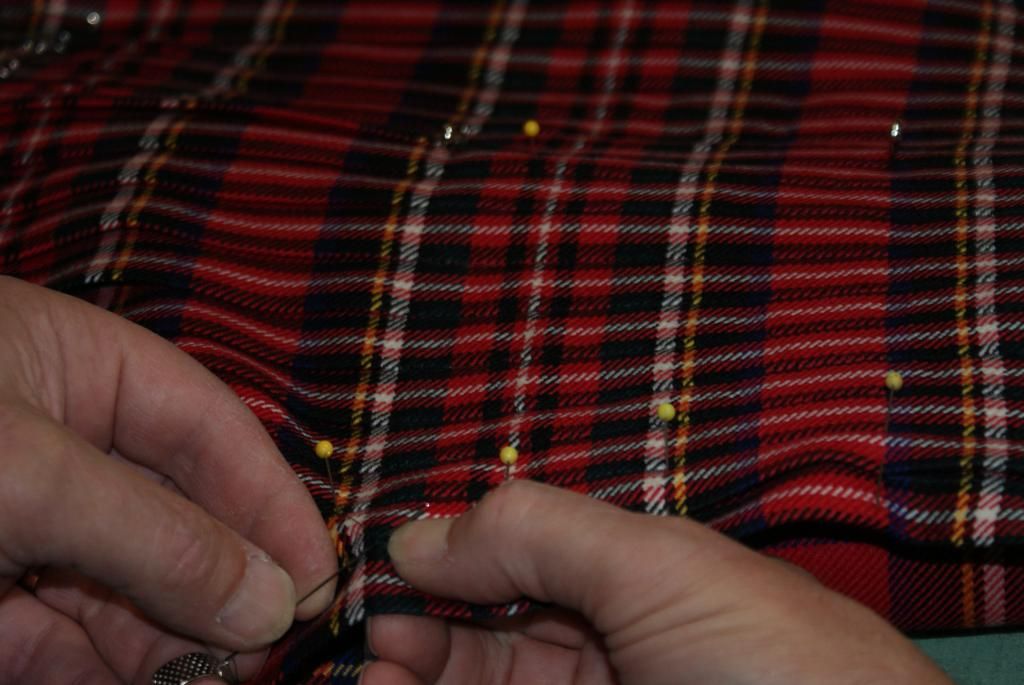
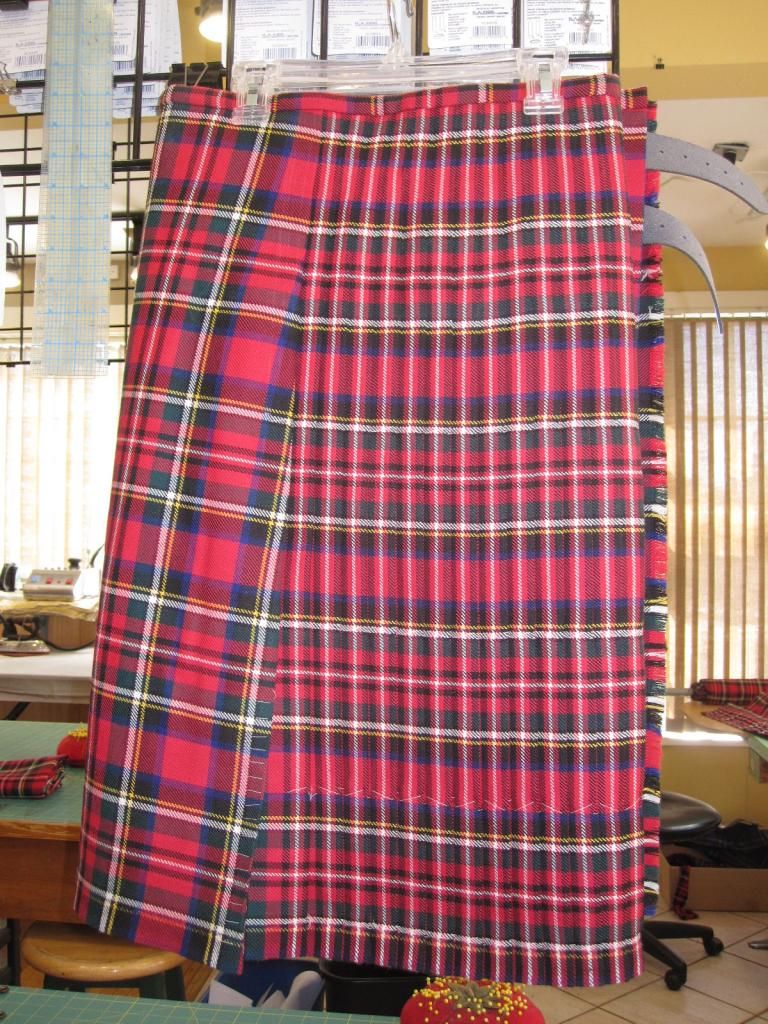



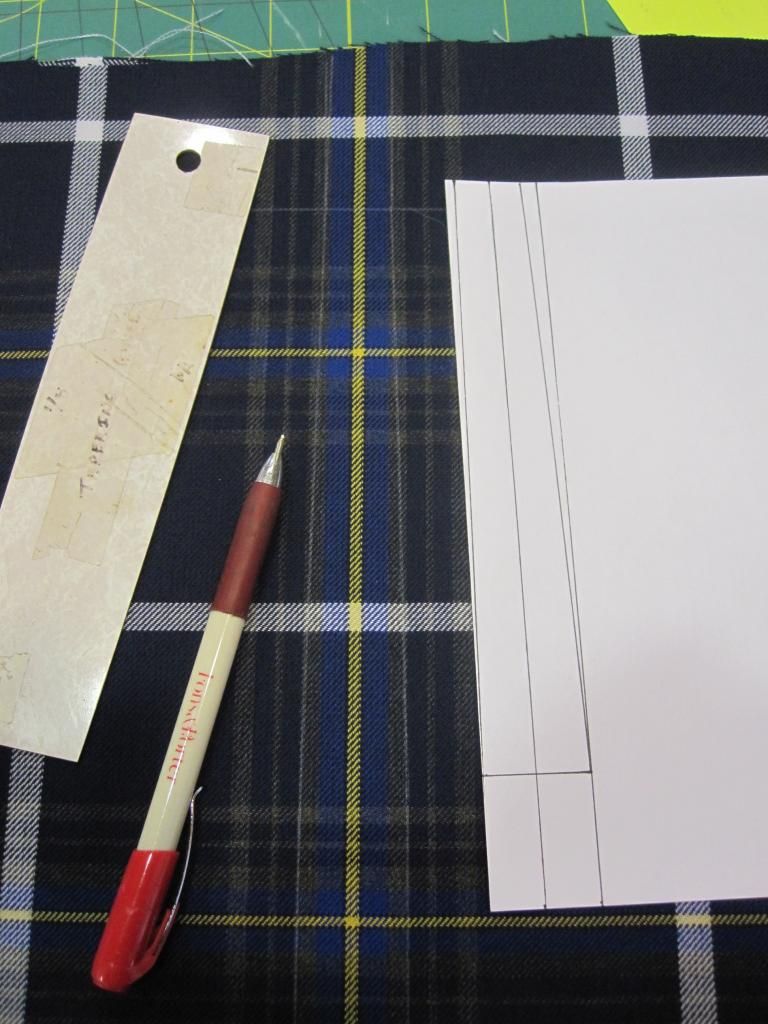

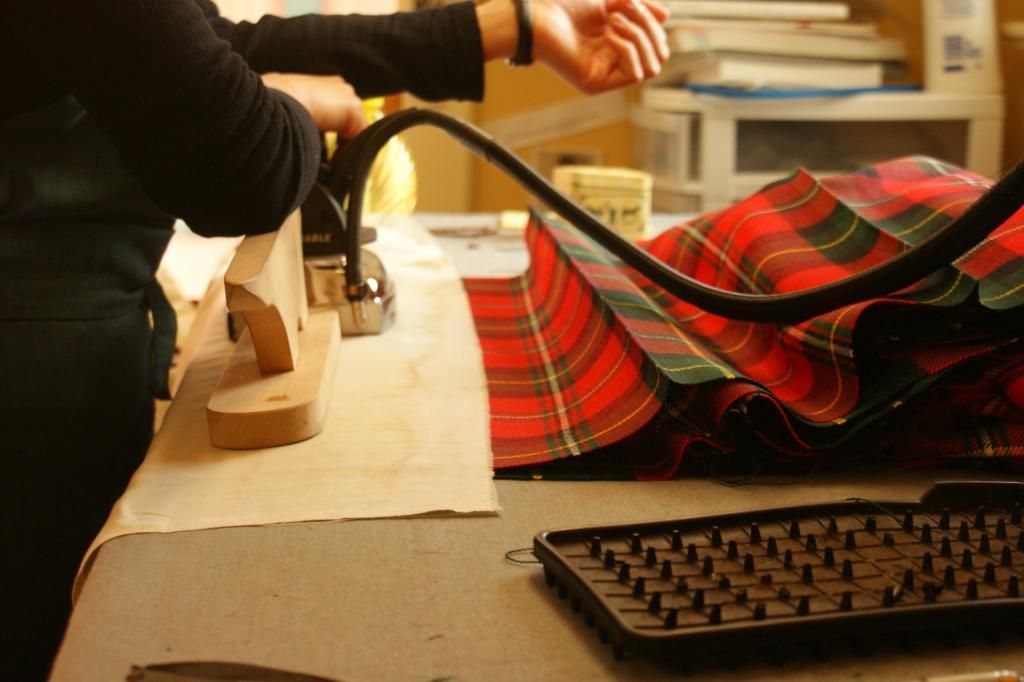
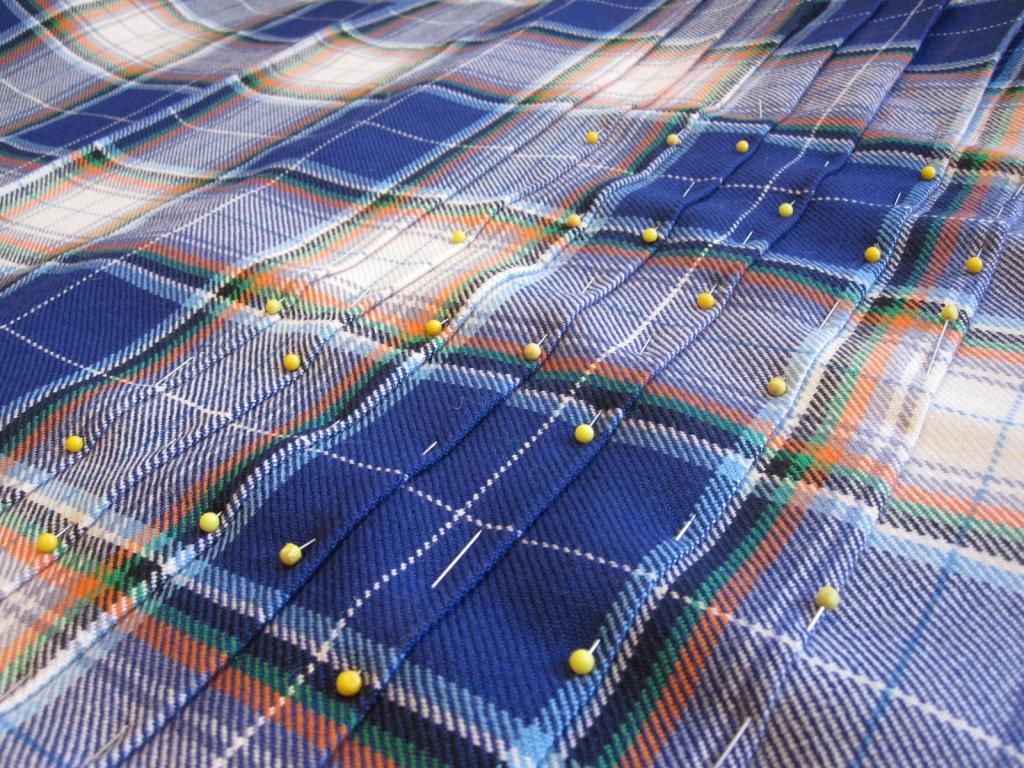









Bookmarks